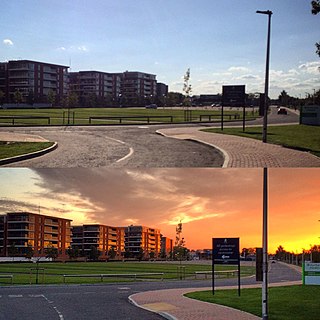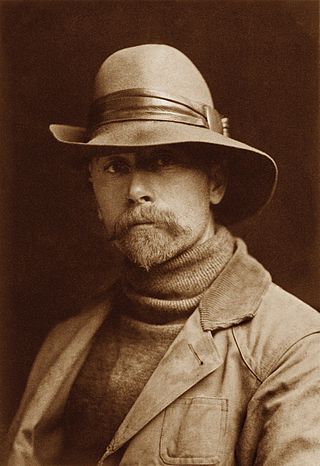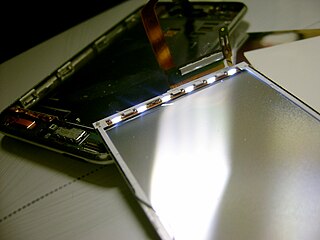Pros and cons of near-axis fill flash
The advantage of using a fill flash located near the lens axis is "normalizing" exposure in situations like backlighting which exceed the ability of the camera to handle the contrast of the lighting. The disadvantage is the same one seen in indoor near-axis flash shots; a lack of directional modeling clues. Near-axis flash indoors and outdoors looks unnatural because natural light comes from overhead putting specular highlights higher on round surfaces like cheeks and creating downward and sideways shadow clues which, combined, help the brain interpret the 3D shape of objects in 2D photographs.
More natural-looking single flash results can be obtained by raising the flash vertically to create a more natural downward angle, but keeping it centered. This is usually preferable when photographing people because it hides most of the shadows, especially the very distracting nose shadow. In this case, the shadow is mostly hidden down below the nose and not noticed. The reason for not moving a single flash off-axis sideways rather than vertically is that any shadows the flash creates will be unfilled, dark, and potentially unflattering if poorly placed on a subject's face.
Bouncing a flash from a surface above the subject, such as a ceiling, creates the same downward modeling direction but isn't a strategy that can be used outdoors. When the flash is moved off-axis or bounced to create directional modeling its role changes from "fill" to that of "key" light.

The red-eye effect in photography is the common appearance of red pupils in color photographs of the eyes of humans and several other animals. It occurs when using a photographic flash that is very close to the camera lens in ambient low light.

In photography, exposure is the amount of light per unit area reaching a frame of photographic film or the surface of an electronic image sensor. It is determined by shutter speed, lens F-number, and scene luminance. Exposure is measured in units of lux-seconds, and can be computed from exposure value (EV) and scene luminance in a specified region.

Cinematography is the art of motion picture photography.

A flash is a device used in photography that produces a brief burst of light at a color temperature of about 5500 Kelvin to help illuminate a scene. A major purpose of a flash is to illuminate a dark scene. Other uses are capturing quickly moving objects or changing the quality of light. Flash refers either to the flash of light itself or to the electronic flash unit discharging the light. Most current flash units are electronic, having evolved from single-use flashbulbs and flammable powders. Modern cameras often activate flash units automatically.

Contre-jour is a photographic technique in which the camera is pointing directly toward a source of light, as well as an equivalent technique of painting.

Underwater photography is the process of taking photographs while under water. It is usually done while scuba diving, but can be done while diving on surface supply, snorkeling, swimming, from a submersible or remotely operated underwater vehicle, or from automated cameras lowered from the surface.

Day for night is a set of cinematic techniques used to simulate a night scene while filming in daylight. It is often employed when it is too difficult or expensive to actually shoot during nighttime. Because both film stocks and digital image sensors lack the sensitivity of the human eye in low light conditions, night scenes recorded in natural light, with or without moonlight, may be underexposed to the point where little or nothing is visible. This problem can be avoided by using daylight to substitute for darkness. When shooting day for night, the scene is typically underexposed in-camera or darkened during post-production, with a blue tint added. Additional effects are often used to heighten the impression of night.

Three-point lighting is a standard method used in visual media such as theatre, video, film, still photography, computer-generated imagery and 3D computer graphics. By using three separate positions, the photographer can illuminate the shot's subject however desired, while also controlling the shading and shadows produced by direct lighting.
In photography, the metering mode refers to the way in which a camera determines exposure. Cameras generally allow the user to select between spot, center-weighted average, or multi-zone metering modes. The different metering modes allow the user to select the most appropriate one for use in a variety of lighting conditions. In complex light situations professional photographers tend to switch to manual mode, rather than depending on a setting determined by the camera.

When setting photoflash exposures, the guide number (GN) of photoflash devices is a measure photographers can use to calculate either the required f‑stop for any given flash-to-subject distance, or the required distance for any given f‑stop. To solve for either of these two variables, one merely divides a device's guide number by the other.

In photography, the golden hour is the period of daytime shortly after sunrise or before sunset, during which daylight is redder and softer than when the sun is higher in the sky.

The key light is the first and usually most important light that a photographer, cinematographer, lighting cameraman, or other scene composer will use in a lighting setup. The purpose of the key light is to highlight the form and dimension of the subject. The key light is not a rigid requirement; omitting the key light can result in a silhouette effect. Many key lights may be placed in a scene to illuminate a moving subject at opportune moments.

In television, film, stage, or photographic lighting, a fill light may be used to reduce the contrast of a scene to match the dynamic range of the recording media and record the same amount of detail typically seen by eye in average lighting and considered normal. From that baseline of normality, using more or less fill will make shadows seem lighter or darker than normal, which will cause the viewer to react differently, by inferring both environmental and mood clues from the tone of the shadows.
Canon's EOS flash system refers to the photographic flash mechanism used on Canon's film or digital EOS single-lens reflex cameras. The line was first introduced in 1987. It has gone through a number of revisions over the years, as new flash exposure metering systems have been introduced. The main light-metering technologies are known as A-TTL, E-TTL, and E-TTL II.

In lighting design, backlighting is the process of illuminating the subject from the back. In other words, the lighting instrument and the viewer face each other, with the subject in between. This creates a glowing effect on the edges of the subject, while other areas are darker. The backlight can be a natural or artificial source of light. When artificial, the back light is usually placed directly behind the subject in a 4-point lighting setup. A back light, which lights foreground elements from the rear, is not to be confused with a background light, which lights background elements.

Portrait photography, or portraiture, is a type of photography aimed toward capturing the personality of a person or group of people by using effective lighting, backdrops, and poses. A portrait photograph may be artistic or clinical. Frequently, portraits are commissioned for special occasions, such as weddings, school events, or commercial purposes. Portraits can serve many purposes, ranging from usage on a personal web site to display in the lobby of a business.

A ring flash is a circular light that is often operated with a camera lens in the center to take photographs. Unlike point light sources, a ring flash can illuminate a subject with minimal shadows by closely and evenly surrounding the optical axis of the camera lens. This makes it a popular choice for various types of photography, including macro, portrait and fashion photography.

In photography and cinematography, a reflector is an improvised or specialised reflective surface used to redirect light towards a given subject or scene.

Photographic lighting refers to how a light source, artificial or natural, illuminates the scene or subject that is photographed. Photographers can manipulate the positioning and the quality of a light source to create visual effects, potentially changing aspects of the photograph such as clarity, tone and saturation to create an accurate rendition of the scene.

An LED-backlit LCD is a liquid-crystal display that uses LEDs for backlighting instead of traditional cold cathode fluorescent (CCFL) backlighting. LED-backlit displays use the same TFT LCD technologies as CCFL-backlit LCDs, but offer a variety of advantages over them.
















